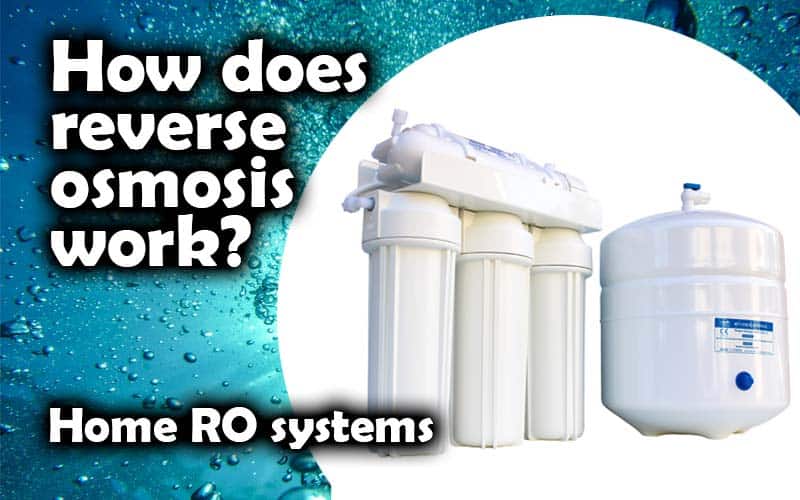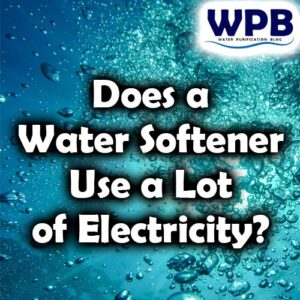How does reverse osmosis work – explanation of working principle
- Domestic Water Purification (78)
- Emergency Water Purification (12)
- Industrial Water Purification (37)
- Outdoor Water Purification (8)
- Water pollution problems (5)
- Water Purification Processes (5)
- Water Quality for Plants (1)
Reverse osmosis is a process in which the water is separated into two streams.
The first one is the permeate – the clean, filtered, purified water from which dissolved salts are removed.
The other one is the concentrate – the part of water that contains the dissolved salts and this part is flushed to drain.
What is reverse osmosis and what it does
Reverse osmosis removes contaminants from water as it passes through the semipermeable membrane by pressure. Water flows from the more concentrated side of the RO membrane to the less concentrated side, providing clean drinking water.
The fresh water produced is called permeate. The remaining concentrated water is called concentrate.
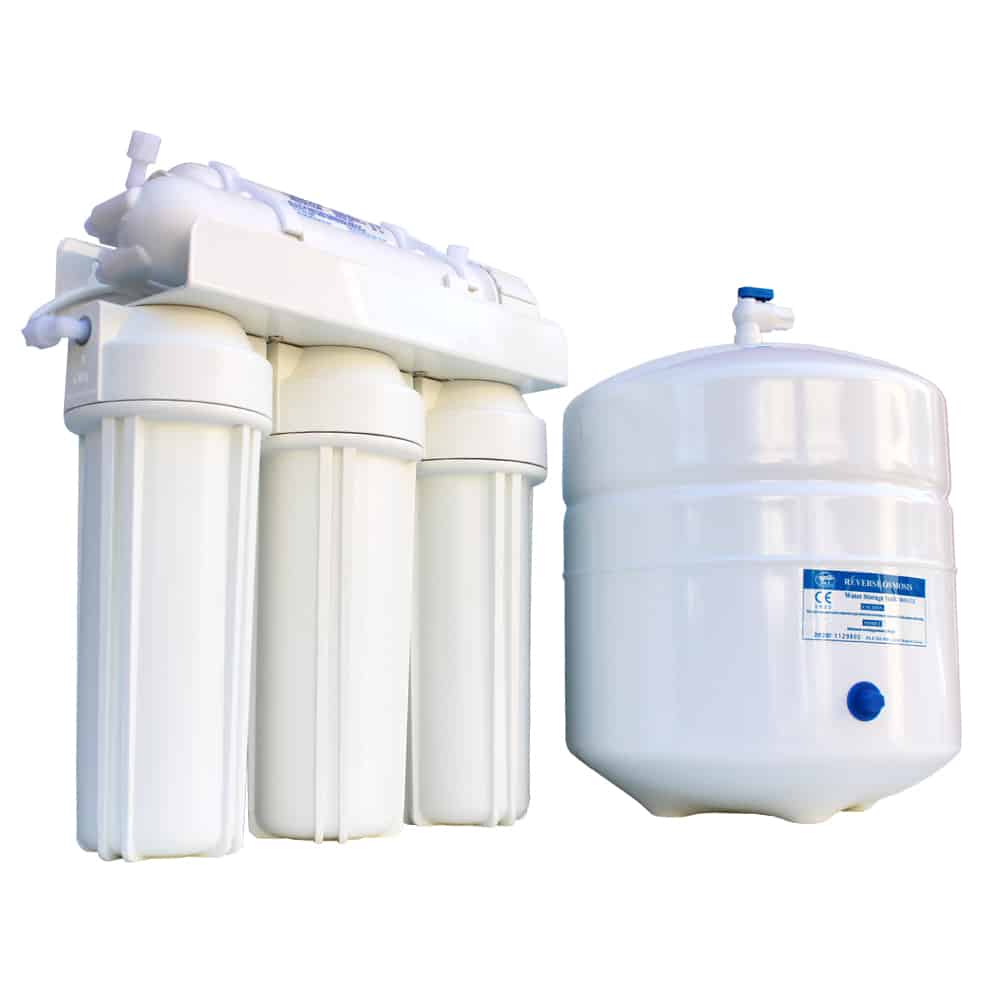
How does reverse osmosis work – Water flow through a home reverse osmosis system
All home under sink reverse osmosis systems are working on a same or very similar principle. Here described is the most usual water flow through a five stage home reverse osmosis system, without booster pump.
Prefilters
Prefilters are a very important part of an RO system. Their main purpose is to protect the other elements of the system and make a big role in how does reverse osmosis work.
Usually there are 3 filter housings with different cartridges. Most common filter cartridges that are used are:
- 20 micron mechanical pre-filter cartridge
- carbon block or granular activated carbon pre-filter cartridge
- 5 micron mechanical pre-filter cartridge
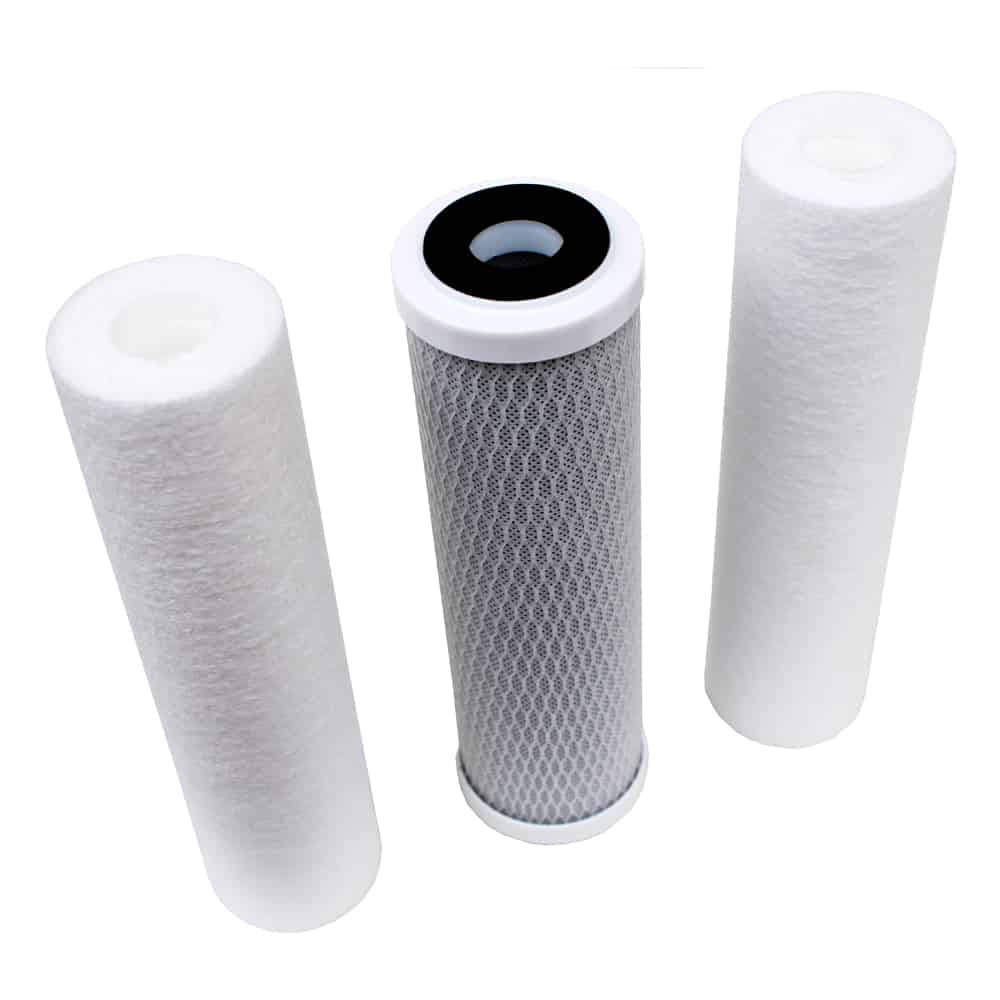
They are the main protection from mechanical impurities and more important from chlorine. Chlorine can permanently and quickly damage the RO membrane so it is very important to remove it completely from the RO membrane feed water.
Chlorine is removed by an activated carbon filter cartridge. Most usually this is a 10″ length carbon block or granular activated carbon filter cartridge.
RO membrane
After mechanical impurities and chlorine is removed, the water flows to an RO membrane.
The membrane separates the feed water into permeate (water free of salts) and concentrate (water saturated with salts, which is drained into the sewer).
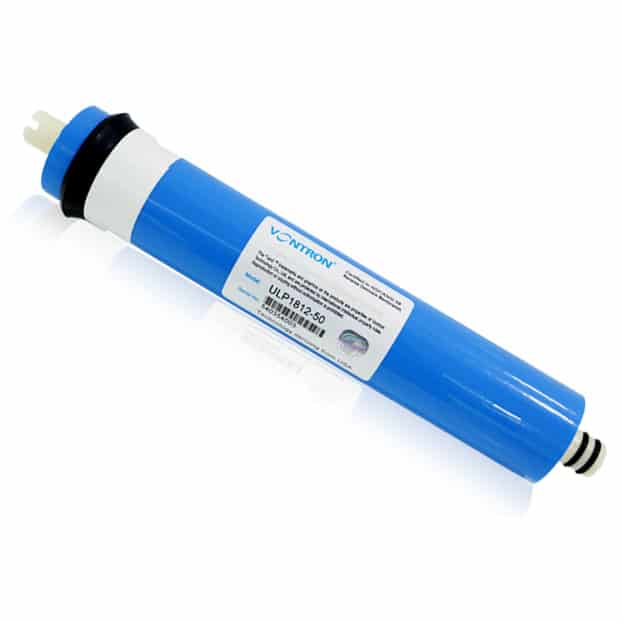
Depending on the pressure of the feed water, the reverse osmosis system can produce up to 50 gpd of clean water (permeate). If the pressure is lower, the device will produce a smaller amount of water per day, which is compensated by using the RO purified water tank.
RO purified water tank
As the purified water production capacity is small, it is stored in a tank with a membrane under pressure.
This way, when the faucet is opened, the water flows with a much higher flow as long there is water in the tank.
Shut off valve
Another important part of the system is the shut off valve.
It cuts off the water supply to the RO system when the tank is full and there is no water consumption at the tap.
When the faucet is opened, the pressure in the tank drops and the shut off valve opens the water supply again.
The system again produces clean water and refills the tank.
Other system elements
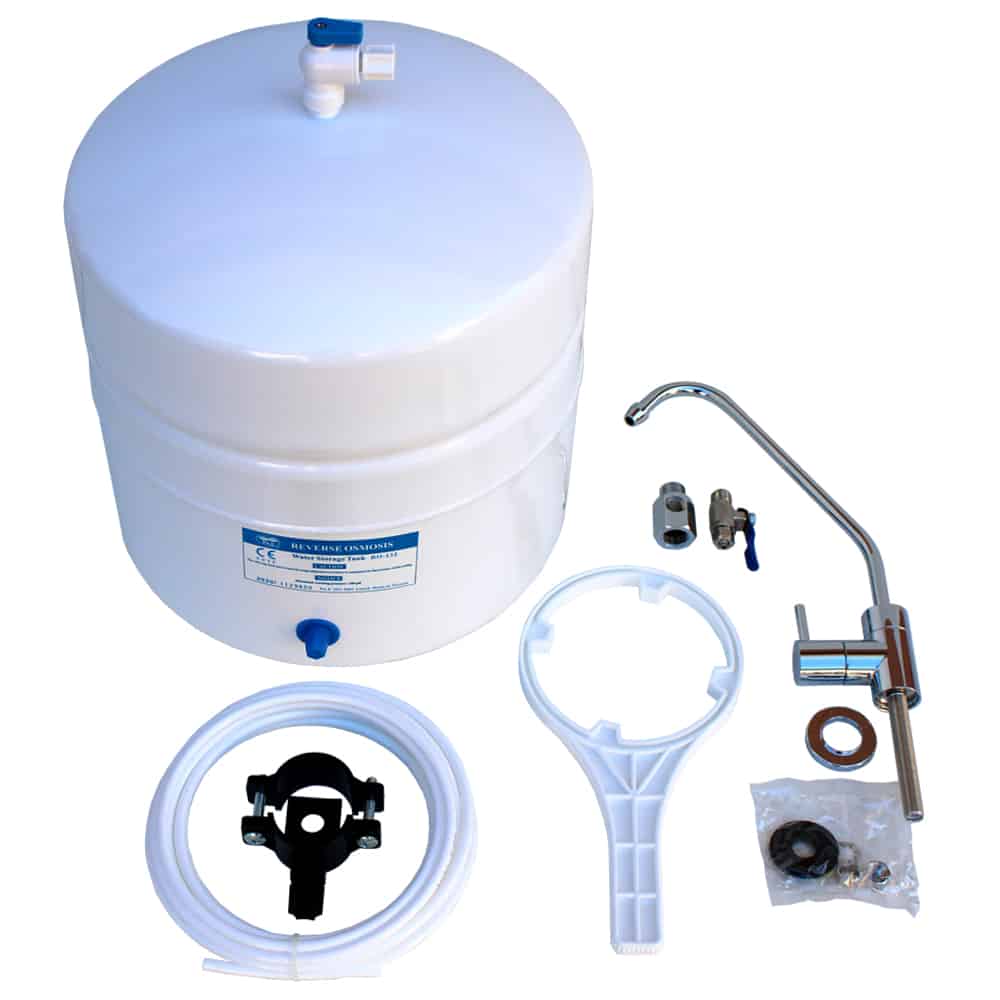
Other system elements are usually the items required for installation of the system.
The most common elements can be seen in the picture above.
Advantages of home reverse osmosis systems
– maintenance is very simple and economical
– the systems are small and easily portable
– the replacement of all elements can be done by the user himself with the detailed instructions provided with the device
– devices without booster pumps do not require an electrical supply
– reverse osmosis systems remove 95 – 98% of all ingredients from the water
– reverse osmosis is the most affordable high tech water filtration available
Where is a reverse osmosis system installed?
The most common place for installation is under the kitchen sink. If your under sink space is too precious, there are also counter top systems. There is a wide range of different reverse osmosis systems with different designs so you can easily find the one that suits your needs.

